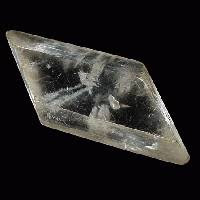I like the way the journals such as Biology Direct now publish reviewers’ comments and authors’ responses together with a final version of the paper. The fact that reviewers’ names are made public ensure that reviewers are properly acknowledged as well as share some responsibility for releasing another pointless paper into the wild. The discussion is often more interesting than a paper. Take the couple of recent highly speculative articles on Zinc world and origin of life [1, 2]. Even though I myself would not recommend any of these manuscripts for publication (luckily nobody asked me), I am glad that these were eventually published, because I really enjoyed reading the reviews — and, occasionally, the authors’ responses.
Reviewer 4: Last but not least I find the last sentence of the paper rather revealing: what could the aesthetics of minerals to do with a scientific argument on the origin of life?
Author’s response: Aesthetic criteria are of great importance in scientific research <...> For example, my initial opposition to the idea of abiogenesis at the floor of the Hadean ocean, when I first heard about it, was purely aesthetic. I simply did not like the idea of the origin of life being in complete darkness.
Similarly, it could have been stated “I simply liked the idea of using a single type of metal cation to fulfill all life’s metal needs”. The authors acknowledge the need for
transition metal ions for origin of life but argue that the zinc is preferred to other transition metals because it is not redox-active. (According to modern view, zinc is not a transition element at all — why to bring transition metals in the first place?) For example, both papers contain the statement that “iron, unlike zinc, is redox-active”. Wait a minute. Is it bad? Since zinc is not redox-active, it cannot be used as a redox cofactor, therefore there won’t be any oxidoreductases utilising zinc. But fear not; apparently, the authors think that NAD(P)H, FAD and FMN evolved before primitive life forms learned how to use Fe
2+ ions safely.
Incidentally, the only danger of redox-active iron mentioned in these papers seems to be the “harmful hydroxyl radicals”. I would not worry much about them though because I don’t think they were the main hazard in largely anoxygenic environment. In general, conditions on Earth at the time were rather harsh. You would’t go outside without an oxygen mask and a very thick (a few inches?) layer of sunscreen. Now add, on top of that, ZnS-catalysed photosynthetic production of formaldehyde [2, equation 1]... yep, sounds a plausible enough way to kick off that life thing.
- Mulkidjanian, A.Y. (2009) On the origin of life in the Zinc world: 1. Photosynthesizing, porous edifices built of hydrothermally precipitated zinc sulfide as cradles of life on Earth. Biology Direct 4, 26.
- Mulkidjanian, A.Y. and Galperin, M.Y. (2009) On the origin of life in the Zinc world. 2. Validation of the hypothesis on the photosynthesizing zinc sulfide edifices as cradles of life on Earth. Biology Direct 4, 27.

.png)






